Thor: The Mighty God of Norse Mythology
In the rich tapestry of Norse mythology, few figures are as prominent and awe-inspiring as Thor, the god of thunder and storms. Known for his immense strength, courage, and loyalty, Thor wields the mighty hammer Mjölnir and stands as a formidable protector of both gods and mortals. With his fiery red hair and fearsome presence, Thor has captured the imagination of countless generations. In this article, we will delve into the origins of Thor, explore his powers and role in Norse mythology, recount his heroic adventures and deeds, and examine his enduring impact on popular culture. Join us on a journey through the fascinating world of Thor, a deity whose power and might are truly legendary.
Contents
- The Origins of Thor
- Thor’s Powers and Role
- Thor’s Adventures and Deeds
- Thor in Norse Mythology and Popular Culture
- Conclusion
-
Frequently Asked Questions
- What are the main attributes of Thor?
- Who are the Aesir gods?
- What is the significance of Mjölnir?
- Is Thor related to other gods?
- What is Thor’s role in Norse mythology?
- Why was Thor considered the protector of Midgard?
- Who are Thor’s greatest adversaries?
- What are some of Thor’s notable adventures?
- How did Thor influence Norse society?
- How has Thor been depicted in popular culture?
- References
-
Frequently Asked Questions
- 1. What is the significance of Thor in Norse mythology?
- 2. Who were the Aesir gods and how does Thor fit into this pantheon?
- 3. Tell me more about Mjölnir, Thor’s mighty hammer.
- 4. What is the family background of Thor?
- 5. What are Thor’s main powers and responsibilities?
- 6. How did Thor battle against giants in Norse mythology?
- 7. How did Thor save mankind?
- 8. How did Thor’s adventures establish him as a guardian of the gods?
- 9. How did Thor’s mythology influence Norse society?
- 10. How is Thor portrayed in Marvel comics and movies?
- References
- Read More
The Origins of Thor
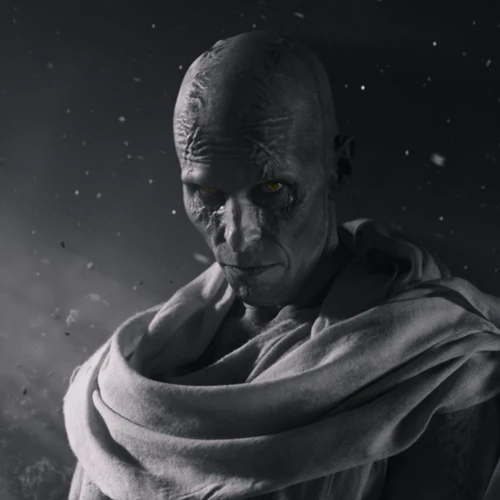
Thor, the mighty god of Norse mythology, originates from the Aesir gods, the divine pantheon revered by the ancient Norse people. As a member of the Aesir, Thor stands alongside Odin, the Allfather, and other powerful deities. Central to Thor’s identity is his iconic weapon, Mjölnir, a mighty hammer forged by the dwarf brothers Brokkr and Sindri. Mjölnir is not only a symbol of Thor’s immense strength, but also serves as a tool for him to channel his thunderous powers. Additionally, Thor is a member of a divine family, often portrayed as the son of Odin and the earth goddess Fjörgyn. These intricate connections and attributes make Thor an integral part of Norse mythology, embodying the power of thunder and representing the might and protection of the gods.
The Aesir Gods
The Aesir gods are a prominent group within Norse mythology, representing the divine pantheon worshipped by the ancient Norse people. These gods reside in Asgard, one of the Nine Worlds, which is a realm of majestic palaces and celestial beauty. Led by the powerful Odin, the Aesir gods embody various aspects of existence, encompassing war, wisdom, fertility, and more. Thor, with his might and thunderous power, is one of the prominent members of this divine assembly. Other notable Aesir gods include Freya, the goddess of love and beauty, and Tyr, the god of law and justice. Each deity carries their unique strengths and responsibilities, contributing to the intricate tapestry of Norse mythology. The interactions and conflicts between the Aesir gods, as well as their relationships with other divine beings such as the Vanir, shape the myths and legends of Norse culture, demonstrating the complex nature of their divine realm and its impact on mortal lives.
Mjölnir, Thor’s Mighty Hammer
Mjölnir, Thor’s mighty hammer, is an iconic symbol of the Thunder God’s power and authority in Norse mythology. Crafted by the skilled dwarf brothers Brokkr and Sindri, Mjölnir is not only an indestructible weapon but also a tool that enables Thor to control the forces of thunder and lightning. The hammer itself possesses incredible properties, one of which is its ability to return to Thor’s hand after being thrown, never failing to strike its intended target. Its immense weight, coupled with Thor’s immense strength, allows him to deliver devastating blows to his adversaries and protect the gods and humans alike. Mjölnir also has the power to summon storms, symbolizing Thor’s connection to thunder and his role as the god of storms. Legend has it that the handle of Mjölnir is relatively short, representing the need for Thor to employ strength and bravery up close in his battles. The hammer is adorned with various inscriptions, one of which translates to “Whosoever holds this hammer, if he be worthy, shall possess the power of Thor.” This inscription serves as a testament to the hammer’s enchantment that only those deemed worthy can wield its incredible power. The significance of Mjölnir in Norse mythology cannot be understated, as it encapsulates the very essence of Thor’s might and serves as a symbol of protection and justice throughout the realms.
Thor’s Family
In Norse mythology, Thor is a member of a formidable divine family. He is often depicted as the son of Odin, the wise Allfather, and Fjörgyn, the earth goddess. Thor’s mother, Fjörgyn, represents the nurturing and protective aspects of nature, while Odin embodies wisdom, leadership, and strategic thinking. Together, they contribute to Thor’s character as a powerful and compassionate deity. Thor is also frequently associated with his stepmother, Frigg, the goddess of marriage and motherhood. Frigg’s influence adds a sense of domesticity and familial bonds to Thor’s story, portraying him not just as a warrior but as a devoted family member as well. While Thor’s immediate family is prominent, his extended family also plays significant roles in Norse mythology. He is the brother of Baldr, the beloved god of light, and Týr, the god of law and heroic glory. Their relationships deepen the complexity of Thor’s character and his connections within the divine pantheon. Thor is married to Sif, the golden-haired fertility goddess, symbolizing the fruitful abundance of the earth. Their union represents the harmony between Thor’s thunderous might and the gentle nurturing forces of nature. This intricate web of familial relationships adds depth to Thor’s story, shaping his identity as a protector and provider for both his divine and mortal kin. To learn more about the influence of familial dynamics in mythology, you can check out /sacrifice-rituals-mayan-mythology/.
Thor’s Powers and Role
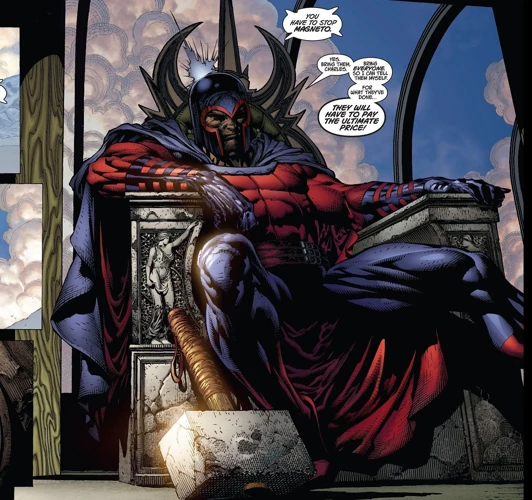
Thor, with his thunderous power and storm-wielding abilities, holds a significant role in Norse mythology. As the god of thunder and storms, Thor commands the forces of nature and harnesses the destructive might of lightning. With each swing of his mighty hammer, Mjölnir, Thor can summon thunderclaps that echo across the heavens. This divine strength and control over weather make Thor a formidable protector of Midgard, the realm of humankind. He safeguards mortals from the chaos and dangers of the natural world, ensuring their survival and well-being. Additionally, Thor assumes the role of defender against giants, fierce adversaries who threaten the realms of gods and humans alike. Thor fearlessly confronts these colossal foes, unleashing his immense power to safeguard the realms from their destructive ambitions. Thor’s powers and role depict him as a god of unparalleled might and a guardian against the forces that seek to disrupt the balance of the cosmos.
God of Thunder and Storms
Thor is revered as the god of thunder and storms in Norse mythology, wielding the power to control these natural forces. As the god of thunder, Thor is associated with the awe-inspiring sound and fury that accompanies a thunderstorm. His role is not merely symbolic, as he possesses the ability to summon lightning bolts with his mighty hammer Mjölnir, sending them crashing down upon his adversaries or the earth itself. The thunderous clap of his hammer striking the clouds is said to reverberate throughout the heavens, striking fear into the hearts of those who oppose him. Thor’s dominion over storms highlights his immense strength and his ability to harness the primal forces of nature. His control over thunder and lightning reminds us of his raw power and the overwhelming impact he has in battles against enemies, both mortal and divine. Thor’s connection to thunder and storms is an integral part of his character and solidifies his status as one of the most formidable and respected gods in Norse mythology.
Protector of Midgard
As the , Thor plays a crucial role in safeguarding the realm of humans from various threats. Midgard, also known as Earth, is the realm inhabited by mortals, and Thor actively takes on the responsibility of keeping them safe. With his immense strength and fierce determination, he defends Midgard against destructive forces, including giants and other menacing creatures that seek to bring chaos and harm to humanity. Thor’s role as the protector of Midgard showcases his dedication to preserving the balance between the realms and ensuring the well-being of humanity. Through his heroic actions and unwavering commitment, Thor exemplifies the ideal of a divine guardian who looks after the mortal realm, etching himself into the hearts and minds of the Norse people.
Defender Against Giants
In Norse mythology, Thor is renowned as the “Defender Against Giants.” The giants, known as Jotnar, pose a constant threat to the gods and the realms they inhabit. Thor, with his immense size, strength, and thunderous power, is the first line of defense against these formidable adversaries. His role as the defender against giants is prominently seen in his numerous battles and encounters with these monstrous beings throughout the mythological texts. One of the most famous stories is the mythological event known as the “Thrymskvida,” where Thor ingeniously disguises himself as the goddess Freyja to retrieve his stolen hammer, Mjölnir, from the giant Thrym. The giants are often depicted as forces of chaos and destruction, seeking to bring about Ragnarok, the end of the world. Thor’s role as the defender against giants not only highlights his physical prowess but also his crucial role in maintaining order and safeguarding the realms from the chaos that giants represent.
Thor’s Adventures and Deeds
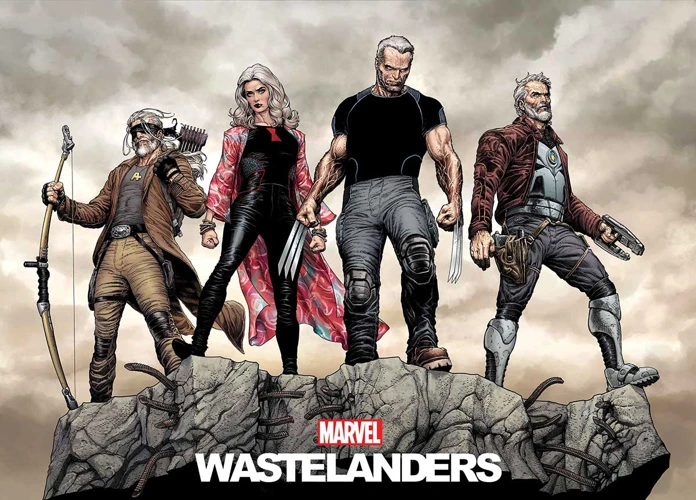
Throughout Norse mythology, Thor engages in numerous adventures and heroic deeds that highlight his courage and strength. One of his most notable feats is his battles against the giants, fierce and powerful creatures who pose a threat to both gods and mankind. Thor valiantly defends Asgard, the realm of gods and home to the Aesir, against the giants’ incursions. Thor has been depicted as saving mankind on various occasions, demonstrating his protective nature towards mortals. One such instance is when he prevented the giant Skrymir from devouring the entire human race. In another famous tale, Thor’s bravery shines as he drinks from a massive horn, attempting to empty the vast ocean. Though unsuccessful, his valiant efforts showcase his unwavering determination. Thor’s numerous adventures and heroic deeds solidify his status as a guardian of the gods and a champion of Midgard, the human realm, ensuring the safety of both realms from malevolent forces.
Battles with Giants
Thor’s battles with giants form a significant aspect of his mythological narrative. Giants, known as Jotnar or Jotuns, are powerful and often hostile beings in Norse mythology. Thor encounters numerous giants throughout his adventures, engaging in fierce and epic battles that showcase his valor and strength. One such notable battle is Thor’s encounter with the giant Hrungnir. This clash of titanic forces became legendary as Thor triumphantly slayed Hrungnir with his mighty hammer, Mjölnir. Another prominent giant adversary of Thor is the monstrous serpent Jormungandr, one of the children of the trickster god Loki. According to the Prophecy of Ragnarok, Thor and Jormungandr will engage in a cataclysmic battle during the end of days. This epic clash will ultimately lead to Thor’s demise, as he defeats the serpent but succumbs to its venomous bite. Despite the potential dangers posed by the giants, Thor fearlessly confronts them, protecting both the gods and humanity from their malevolent intentions. Through his battles with the giants, Thor exemplifies courage, heroism, and his unwavering dedication to preserving the realms from chaos and destruction.
Saving Mankind
Thor, in his role as a protector of both gods and mortals, has a significant part to play in saving mankind from various threats in Norse mythology. One remarkable instance of Thor’s heroism in this regard is his encounter with the fearsome world serpent Jormungandr, a monstrous serpent that encircles the entire world. According to the prophecies, Jormungandr and Thor are destined to face each other in a final battle during Ragnarok, the cataclysmic event that brings about the end of the world. In preparation for this epic clash, Thor once disguised himself as a giantess named Thökk, preventing the giant Utgard-Loki from untying a knot that only Thor could unravel. This knot, known as the Gleipnir, was created as a means of restraining Fenrir, the monstrous wolf. Thor’s intervention in preserving the knot prevented Fenrir from breaking free and wreaking havoc upon the world. By effectively safeguarding the knot and restraining Fenrir, Thor played a crucial role in ensuring the continued safety of mankind and the gods alike. Through his bravery and resourcefulness, Thor consistently demonstrates his unwavering dedication to the preservation of humanity in the face of formidable challenges.
Guardian of the Gods
As the powerful god of thunder, Thor assumes the role of the guardian of the gods in Norse mythology. With his immense strength and unwavering courage, Thor stands as a stalwart defender, ensuring the safety and well-being of his divine kin. It is Thor’s duty to protect Asgard, the realm of the gods, from any potential threats or attacks. He is ever watchful, always ready to face any adversaries that may pose a danger to his fellow deities. With Mjölnir in his hand, Thor can summon thunder and lightning, further enhancing his ability to keep the gods safe from harm’s way. In times of crisis, Thor fearlessly leads the charge, confronting any challenges head-on and inspiring his fellow gods to stand their ground. His unwavering loyalty and determination make him the ultimate guardian of the divine realm, a symbol of strength and protection that the gods can rely on. Thor’s role as the guardian of the gods emphasizes his importance within the pantheon and solidifies his position as one of the central figures in Norse mythology.
Thor in Norse Mythology and Popular Culture
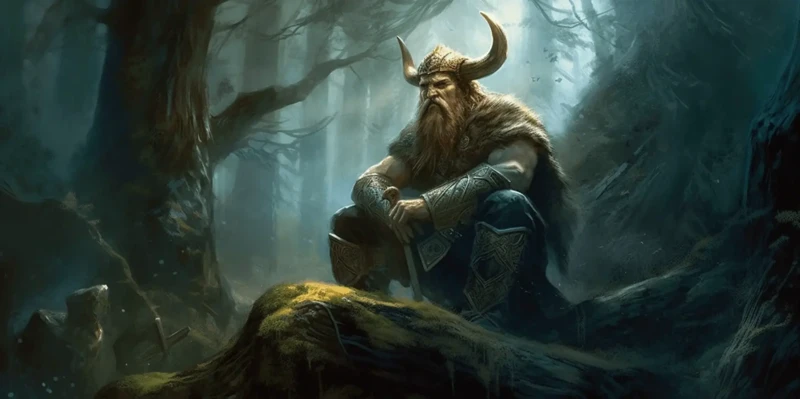
Thor’s influence extends beyond Norse mythology and into popular culture, captivating the imaginations of people worldwide. The tales of Thor’s heroic exploits and fearsome power have seeped into various facets of modern society. From literature and art to movies and comics, Thor continues to captivate audiences. One notable example is his integration into the Marvel Comics universe, where he is a founding member of the Avengers and a beloved superhero. The Marvel Cinematic Universe brought Thor to the big screen, catapulting the character into even greater prominence. This modern interpretation of Thor has introduced him to new generations, solidifying his place in popular culture. Thor’s symbolism, representing strength, courage, and protection, continues to resonate with individuals seeking inspiration and a connection to ancient mythologies. The enduring popularity of Thor showcases the timeless appeal and universality of this powerful deity.
Influence on Norse Society
The influence of Thor and Norse mythology on Norse society was profound and far-reaching. Thor, as the god of thunder and storms, held a significant place in the hearts and minds of the Norse people. He was seen as a powerful protector and a symbol of strength and bravery. The legendary tales of Thor’s exploits and his battles against giants resonated with the Norse society, instilling a sense of courage and resilience in the face of adversity. Thor’s mythological significance extended beyond the realm of folklore and had practical implications as well. Farmers and sailors revered Thor, believing that his blessings would bring fertile lands and safe voyages. His connection to thunder and storms made him an important deity in agriculture, as thunderstorms were seen as essential for nurturing crops. Thor’s influence also extended to matters of law and order. The concept of oaths and the sacredness of agreements were deeply intertwined with Thor’s character. Breaking an oath made in Thor’s name was believed to invoke his wrath, emphasizing the role of honor and integrity in Norse society. The symbolism of Mjölnir, Thor’s hammer, was used to invoke Thor’s protection and strength in various aspects of life. The hammer’s striking symbol could be found on amulets, jewelry, and even carved into buildings, serving as a potent symbol of Thor’s influence on Norse society. Through his mythology and symbolism, Thor shaped the religious, cultural, and moral fabric of the Norse people, leaving an indelible mark on their collective consciousness.
Thor in Marvel Comics and Movies
Thor’s presence in Marvel comics and movies has brought the powerful Norse god to a wider audience, solidifying his status as a beloved and iconic character. In Marvel Comics, Thor made his debut in 1962, created by writer Stan Lee, scripter Larry Lieber, and artist Jack Kirby. Portrayed as a superhero rather than a deity, Marvel’s Thor became a founding member of the superhero team, the Avengers. The comics delved into Thor’s mythological background, exploring his relationships with other characters from Norse mythology, such as Loki, Odin, and Asgard. Thor’s superhuman strength, ability to fly, and control over thunder and lightning became integral to his character’s development. It was through the Marvel Cinematic Universe (MCU) that Thor’s popularity skyrocketed. Actor Chris Hemsworth brought the legendary god to life on the big screen, captivating audiences with his charisma and physical presence. In the MCU, Thor’s story intertwines with other Marvel characters and plotlines, giving him a multidimensional character arc. From his standalone films to his appearances in Avengers movies, Thor’s heroism, struggles, and growth have been showcased to great effect. The incorporation of Norse mythology into the Marvel universe has not only given fans thrilling stories but also sparked interest in the original myths and legends. As Marvel continues to expand its cinematic universe, Thor remains a significant figure, inspiring both comic book enthusiasts and moviegoers alike. Truly, the impact of Thor in Marvel comics and movies cannot be overstated, as it has helped solidify his place in popular culture and elevate his status as a god-like superhero.
Thor’s Symbolism in Modern Times
In modern times, the symbolism of Thor continues to resonate in various aspects of popular culture. One prominent example of Thor’s symbolism can be seen in the Marvel Comics and the Marvel Cinematic Universe. Thor has been portrayed as a superhero with godlike powers, captivating audiences around the world with his heroic deeds and larger-than-life persona. The character Thor has become an icon of strength, courage, and resilience, inspiring individuals to overcome challenges and embrace their own inner power. Thor’s association with thunder and storms has contributed to his representation as a force of nature, representing the uncontrollable and awe-inspiring aspects of the natural world.
Thor’s symbolism has also extended beyond the realm of comics and movies. In modern society, his hammer Mjölnir has been adopted as a symbol of strength, protection, and endurance. It has become a popular motif in jewelry, tattoos, and various forms of art, serving as a reminder of the indomitable spirit and the power within oneself. The image of Mjölnir has been embraced by individuals who strive for resilience and who seek to harness their inner strength to face life’s challenges head-on. Thor’s stories and characteristics have influenced the realms of literature, music, and even sports, where his name and imagery have been used to evoke a sense of power and determination.
Thor’s symbolism in modern times remains a source of inspiration and fascination. From the realms of comic books and movies to the adoption of Mjölnir as a symbol of strength in various aspects of popular culture, Thor continues to captivate the imagination of people worldwide. His representation as a powerful and heroic figure serves as a reminder of the potential for greatness that resides within each individual. Thor’s enduring presence in modern times showcases the timeless appeal and universal significance of mythology in shaping our collective consciousness.
Reference Link: /astro-aspects-career-success/
Conclusion
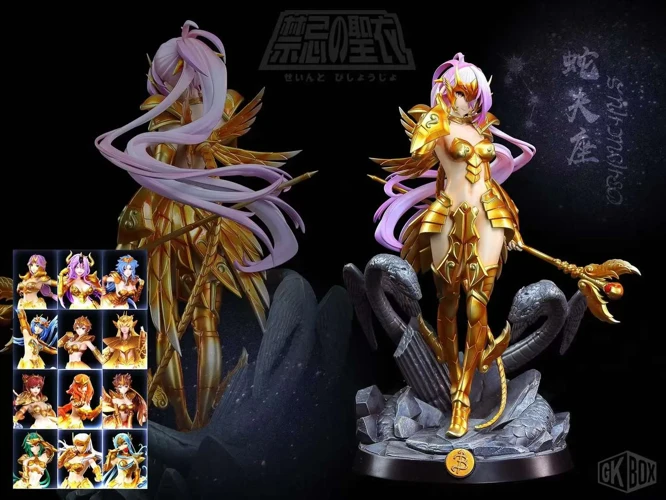
In conclusion, the powerful god Thor occupies a significant place in Norse mythology and has captivated the hearts and minds of people throughout history. His origins as part of the Aesir gods, his possession of the formidable hammer Mjölnir, and his role as the protector of both gods and mortals make him a formidable and revered figure. Thor’s powers as the god of thunder and storms, his battles against giants, and his heroic deeds in saving mankind further cement his status as one of the most influential gods in Norse mythology. This impactful deity has not only shaped the beliefs and values of ancient Norse society but has also left a lasting imprint on popular culture. From ancient tales to modern interpretations such as Marvel comics and movies, Thor continues to be celebrated for his strength, bravery, and unwavering loyalty. The legend of Thor, with its countless adventures and heroism, will continue to endure and inspire generations to come. For more fascinating mythological tales, you may explore the legend of Imhotep Ophiuchus in ancient Egyptian mythology.
Frequently Asked Questions

What are the main attributes of Thor?
Thor is widely known for his immense strength, his ability to control thunder and storms, and his possession of the mighty hammer Mjölnir.
Who are the Aesir gods?
The Aesir gods are a group of deities in Norse mythology, including Thor, Odin, Freya, and Loki, among others. They are the principal gods worshipped by the ancient Norse people.
What is the significance of Mjölnir?
Mjölnir, Thor’s iconic hammer, is both a symbol of his power and a weapon he uses to protect the gods and humans. It is said to possess the ability to level mountains and control lightning.
Yes, Thor is often portrayed as the son of Odin, the Allfather, and the earth goddess Fjörgyn. He is also the brother of gods like Baldr and Hodr.
What is Thor’s role in Norse mythology?
Thor plays a crucial role as the god of thunder and storms, safeguarding both gods and humans from the forces of chaos and giant creatures.
Why was Thor considered the protector of Midgard?
Midgard is the realm of humans in Norse mythology, and Thor is seen as their protector. He defends them from giants and other threats, ensuring their safety and well-being.
Who are Thor’s greatest adversaries?
Thor often battles against the giants, with Jotunheim, the land of the giants, being his primary battlefield. Frost giants, in particular, pose significant challenges to him.
What are some of Thor’s notable adventures?
Thor engages in numerous heroic exploits, including his frequent battles with giants, his efforts to save mankind from various calamities, and his role in defending the gods during times of crisis.
How did Thor influence Norse society?
Thor held a prominent place in Norse society, as he represented courage, strength, and protection. His worship and reverence played a crucial role in shaping the belief system and values of the Norse people.
How has Thor been depicted in popular culture?
Thor’s character has been popularized and adapted in various forms of media. One notable portrayal is in Marvel Comics and movies, where he is depicted as a superhero alongside other iconic characters from Norse mythology.
References
- The 10 Most Powerful Norse Gods and Goddesses
- Thor
- The Twelve Most Important Gods in Norse Mythology |
Frequently Asked Questions

1. What is the significance of Thor in Norse mythology?
Thor holds great importance in Norse mythology as the god of thunder and storms. He is revered as a protector of Midgard, defender against giants, and a symbol of strength and courage.
2. Who were the Aesir gods and how does Thor fit into this pantheon?
The Aesir gods were a group of deities in Norse mythology, and Thor was one of the most prominent members. He played a central role in the Aesir’s battles against the giants, showcasing his immense power and bravery.
3. Tell me more about Mjölnir, Thor’s mighty hammer.
Mjölnir is Thor’s iconic weapon, known for its incredible power. Crafted by the dwarves, this legendary hammer allowed Thor to control thunder and lightning. It was also a symbol of his status as the god of thunder.
4. What is the family background of Thor?
Thor is the son of Odin, the All-Father, and the earth goddess, Jörð (also known as Fjörgyn). He is primarily associated with his mother’s domain, which explains his deep connection with Midgard, the realm of humans.
5. What are Thor’s main powers and responsibilities?
Thor’s powers include control over thunder, lightning, storms, and the ability to manipulate the forces of nature. His main responsibilities include protecting Midgard from giants and other threats, as well as safeguarding the Aesir gods.
6. How did Thor battle against giants in Norse mythology?
Thor engaged in numerous epic battles against the giants in Norse mythology. Armed with his mighty hammer, Mjölnir, he defeated ferocious giants and other evil creatures, protecting the realms of gods and humans alike.
7. How did Thor save mankind?
One of Thor’s most notable deeds was his role in saving mankind. He defended humans against giants, trolls, and other menacing creatures that threatened their existence. His bravery and might ensured the survival and well-being of humanity.
8. How did Thor’s adventures establish him as a guardian of the gods?
Thor’s heroic adventures, particularly his battles against giants and other formidable beings, established him as a powerful guardian of the gods. His unwavering dedication and willingness to face any challenge made him a trusted protector of the divine realm.
9. How did Thor’s mythology influence Norse society?
Thor’s mythology had a significant impact on Norse society. He represented the qualities valued in Viking culture, such as strength, courage, and protection. Thor’s worship played an essential role in the lives of Vikings, offering them hope and inspiration.
10. How is Thor portrayed in Marvel comics and movies?
Thor’s character in Marvel comics and movies draws inspiration from Norse mythology. While some elements are fictionalized, they retain elements of his mythology, including his iconic hammer, Mjölnir, and his role as the god of thunder. Marvel’s portrayal has introduced Thor to a wider audience, expanding the popularity of Norse mythology.







